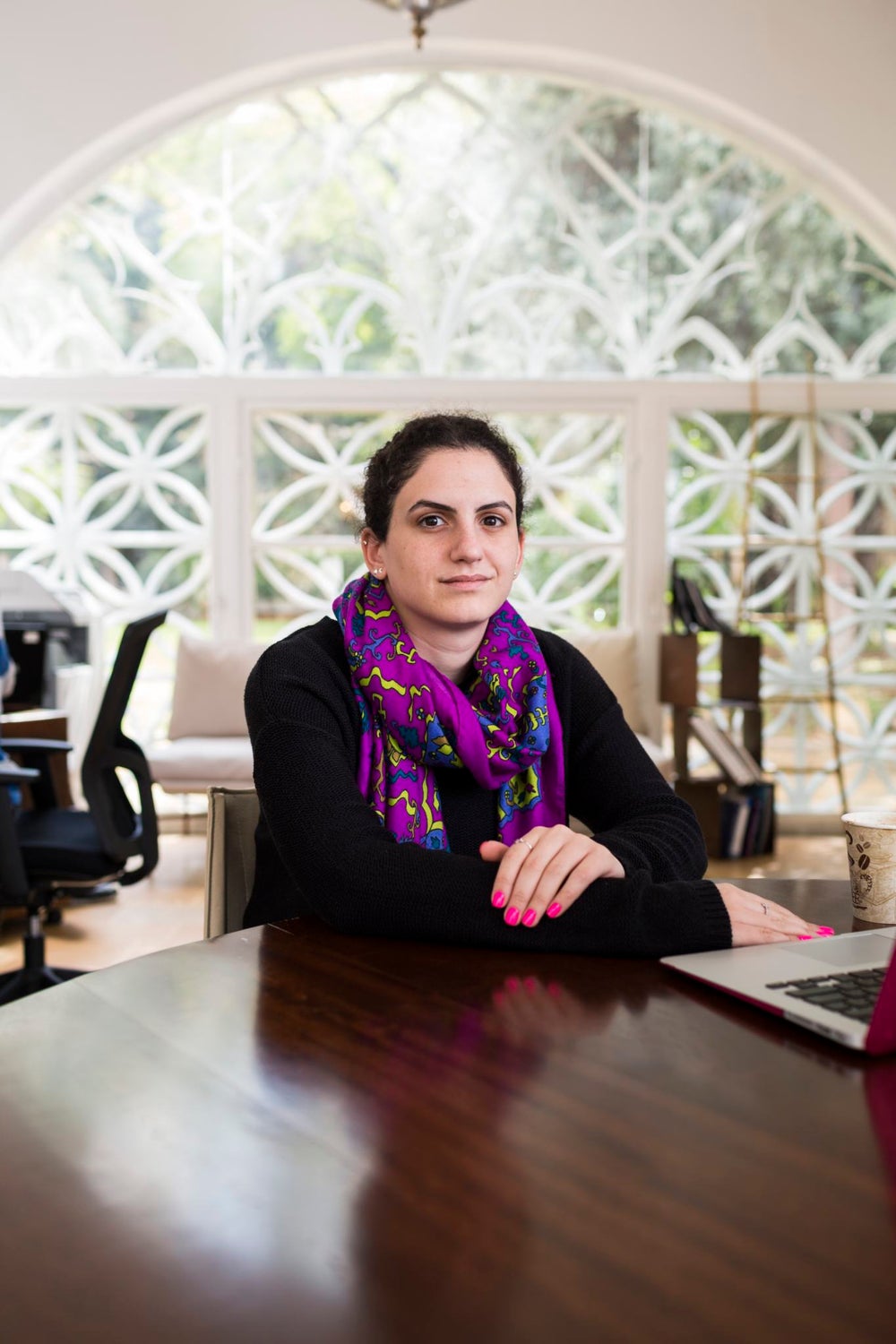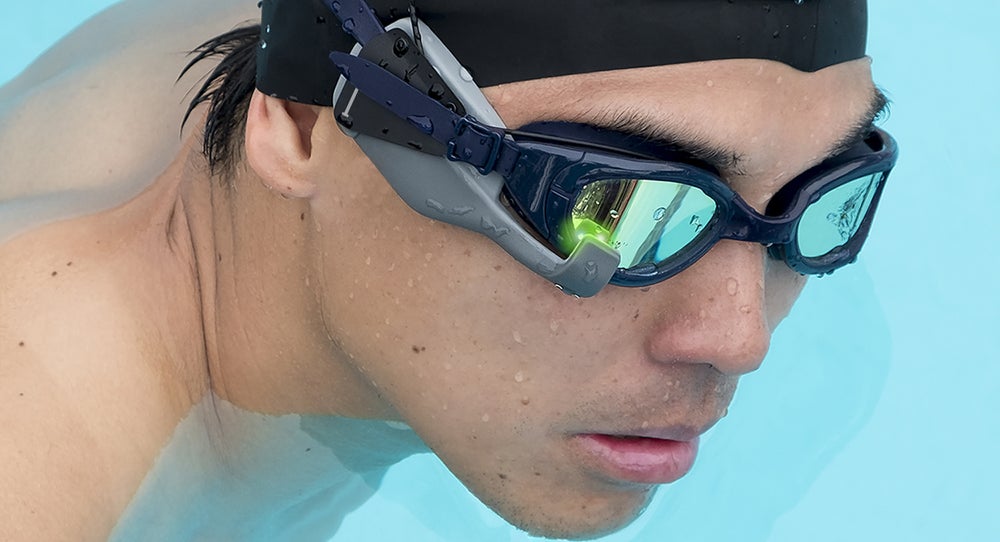In The Pursuit Of Greatness: Instabeat Founder Hind Hobeika Instabeat founder Hind Hobeika on her entrepreneurial journey of building a hardware startup.
By Tamara Pupic
You're reading Entrepreneur Middle East, an international franchise of Entrepreneur Media.

Last July, Instabeat, a San Francisco-based hardware startup founded by Lebanese entrepreneur Hind Hobeika, launched its in-sight immersive swimming wearable, designed to help swimmers improve performance with real-time training optimization. It was a typical announcement, detailing the key features and benefits of the product, which included providing swimmers with real-time heart rate feedback, automatic stroke recognition, lap detection, and detailed analytics to elevate performance and motivation in the water. It further added that the swim trainer had been tested on over 250 swimmers and triathletes, including Olympic swimmer Sabine Hazboun and Ironman World Champion Leanda Cave. In stating that Instabeat had spent a total of eight years of research and development between Lebanon, China, and the US, the announcement only hinted at the perseverance and hard work Hobeika invested to bring this product to market.

Hind Hobeika, founder, Instabeat
Source: Instabeat
Hit rewind, and we will find Hobeika in Beirut, juggling the studies of mechanical engineering at the American University of Beirut, and being a passionately competitive swimmer, devoting hours of training in the pool. After graduating and still in the pursuit of swimming greatness, she looked for tools to improve her technique for maximum results. "I was shocked to see the gap in those products for swimming, even in waterproof tech products," Hobeika says. "That's how the idea of Instabeat came about." In 2010, she took part in Stars of Science, a pan-Arab edutainment reality TV show, which annually invites Arab inventors to produce an engineering prototype, and demonstrate the viability of new technology that can have an impact on their communities. "The prototype was big and bulky, but it proved that we were able to accurately measure the heart rate from the temple underwater, and that the sensor system could be fitted on the side of a goggle," she says. "However, the Stars of Science experience was so unique, because, for the first time of my life, I went from an idea, to working on a prototype in just three months. This blew my mind. I had previously worked at a very large corporation, where it had taken years and thousands of people to create only one feature in a product. I was hooked on the power of creating, and more so, to the power of hardware to create unique experiences."
One year later, Hobeika founded the company in Beirut, and she carried out extensive research into user preferences for her future product. "I first interviewed around 40 swimmers from all over the world to understand their training behavior, struggles and criteria for success," she says. "I understood that swimmers were not willing to give up their goggles, and were not willing to wear any additional tool that would add friction, and so, they were lacking real-time feedback. That helped me define the user specifications of the product, that it should be a unit that could be mounted on any swimming goggle, and that delivered accurate actionable data to aid training for better performance. I also wanted to make sure the product preserved the meditative aspect and the magic of swimming, and would not be ruined by this piece of tech, which is why we picked colors over a digital screen."

Instabeat app
Source: Instabeat
In 2013, Hobeika launched a crowdfunding campaign with a goal of raising US$35,000. Within the first few days of the campaign, the target was more than twice surpassed by the contributors coming from 56 countries around the world. During this time, Hobeika explains, she learnt some of the most important lessons about hardware design, namely that designing a prototype, and designing for manufacture should be treated separately. "If you have a design and engineering team who are well-versed in manufacturing, they can save you a lot of time by considering manufacturing and supply chain constraints early in the design," she says. "I would advise any other entrepreneur building a hardware product to understand their design constraints early on, and test for them. I can't stress this enough. We were testing our product on swimmers in Lebanon, who all had fairly similar head shapes and skin complexion. Yet, when we started testing outside, we realized that our design was biased. The second lesson I learned the hard way was the difference between being a research and engineering company, and a consumer company. In research, especially when you are working on something really new that hasn't been done before, it's really hard to have hard deadlines, as discovery is a part of the process. However, when you're a consumerfacing company, you need to answer questions very quickly, and be ready to handle all complaints. This gets particularly challenging if you don't have the answers, which is why a hardware startup needs to think very carefully about the right time to go consumerfacing."
Regardless of the hardships, in 2015, Instabeat started shipping its products. The initial few batches received good reviews, but behind the scenes, the team faced numerous problems, this time with manufacturing. "Back then, I looked for manufacturers who had experience working with waterproof products, and found one in Silicon Valley who had also had experience working with large Fortune 500 companies, so I thought it had high design standards I could trust," Hobeika recalls. "That partner looked really good on paper; however, they did not have the skillset to tackle our difficult manufacturing challenge, which was designing a flexible silicone case. So, I would advise anyone that, once they have understood their design complexities really well, they should look for someone who has already solved that problem." She adds to highlight the importance of this advice to other hardware entrepreneurs: "Having the right manufacturing contract in place can make or break you. I once heard one of the big manufacturing giants say, 'Most startups we work with run out of cash before we get them to production.' Incentives with your manufacturer should be aligned, so the relationship can work on the long-term."

Instabeat's goggle-mounted performance trainer
Source: Instabeat
By 2016, Instabeat stopped manufacturing, leading Hobeika to a painful dilemma of deciding whether to shut down the company or try one more time. By a chance encounter, she met Alex Asseily, co-founder of Jawbone, a San Francisco-based startup which is today known for its innovations in the wearables market, but which has been through its own share of ups and downs. The two decided to team up, and rebuild Instabeat from scratch. Hobeika raised $4 million from Berytech Fund II, and then moved to San Francisco. "Our test protocol to get to a final form factor was really unique, as we involved almost the entire swimming community in San Francisco and Lebanon to make it happen," Hobeika says. "We would 3D print in the morning, go to the pool in the afternoon with 10 people, each of whom would need to swim with 10 different sets of goggles. If it leaked, we would film and modify the prototype on the spot, and that cycle kept repeating for over nine months, until we got to a product that would seamlessly fit onto any swimming goggle and provide accurate reading."
However, Hobeika once again was not spared from challenges related to design and manufacture. "At that point, we had a commitment from a large contract manufacturer that was interested in investing in startups, and we had hired a design firm to design the product according to a technique that only the manufacturer could do, but at the very last minute, our project manager quit, and the new one did not have the same interest." Hobeika explains that, throughout 2017, she talked with nearly 100 manufacturers in the US and China, all of whom refused to work on her product because of its complexity. Not forgetting her experience with manufacturers when the company was still based in Beirut, she now opted for a manufacturer who had experience in flexible silicone products. "They turned out to be an amazing partner, working hard with us to launch the product. In 2018, I started working with them from the US, but then I quickly realized that, as a small firm, they needed my help, so my twoweek- long trip ended up being a one-year stay in China, until the product got made." To date, Instabeat has raised a total of $6 million in funding from Berytech Fund, Wamda Capital, Jabbar Capital, and angel investors. Advising other hardware entrepreneurs on how to pitch to investors, Hobeika highlights that their minimum viable product should solve the main competitive advantage over other competing products. "It doesn't have to be fully functional," she adds. "So, for example, Instabeat's MVP was a heart rate sensor that could accurately read the heart rate from the temples underwater. The most important part of the pitch is the competitive advantage that your hardware will have, how it will help you win the market, and why you cannot run your business without the hardware portion. Otherwise, there's no reason to justify the investment, and all investors prefer software investments. When it comes to picking investors, unfortunately, there aren't a lot of hardware investors in our region. So, either go to the very few who have already done it, or plan on filling that gap in your team's side, so that they can gain confidence."
For those thinking of relocating their startups to San Francisco too, Hobeika advises it to be done for strategic reasons only. "I first went there because I was working with our manufacturing partner there, but then I realized that all Olympic swimmers were based there, and that San Francisco was a huge city for triathlons. Being there allowed me to be part of the same community as my target customer. Also, I would say that in a city like San Francisco, it's easier to make friends who are on a similar journey, and there is also more serendipity that happens in general. For instance, I met an Olympic swimmer at the dentist's, or I met a very big swimming brand at a conference, but does that justify multiplying your business cost by five? Probably not." Looking back, Hobeika is proud that Instabeat is the only sensor product that can mount on any pair of goggles, and give real-time heart rate performance metrics. "This is really important because swimmers are so particular about their goggles, and with over 90 different shapes in the market, it's really hard to create a "one size fits all' design, but we were up for the challenge," she says. "Our heart rate sensor and our motion algorithm are one of the most accurate on the market!" She adds that it is the first time in the history of the sport that swimmers are able to get bio-feedback in real-time, enabling them to learn from data that was neither known nor proven before. "The goal for Instabeat is to advance the science and tech behind the sport for bettering performance, but also it's being used by fitness swimmers as a motivation tool to explore more in their training," she says.
To conclude, Hobeika says, "Be patient! Launching a hardware product takes an enormous amount of time, keep pushing through, and don't lose touch with your consumer while you're doing it!"
"TREP TALK
Instabeat's Hind Hobeika on navigating challenges and opportunities as a hardware startup
Your hardware product needs to be something that can't be easily replicated
"Make sure you have a very strong hardware barrier to entry, at least at the beginning."
Market research is critical to the success of your product
"There is no "lean hardware' or A/B testing to figure out specifications on the go, you should really dive deep into consumer insights in any way you can before locking the product specifications."
Don't go into manufacturing until your product is absolutely ready
"When you get to the manufacturing stage, every "mistake' to fix costs thousands of dollars and weeks of time to fix."
Always keep an eye on your finances
"Manage your cash flow really well. When you are half way through your prototyping, I would suggest to get a supply chain person with a very strong financial background to do that for you."
Be extremely sure before your enterprise goes consumer-facing
"Pick the moment you go public very carefully."
Do not release a product that you're not a 100% sure about
"When you launch, you can't just release a software update to fix a bug. A hardware recall can break your company."
You need a team who has expertise in the field
"In order to do things right, fast, and in a cost-effective way, it's really important to have a team who has launched similar products before, ideally in the same category."
Related: StartAD Is Seeking AI And Hardware Startups For Venture Launchpad 2019











